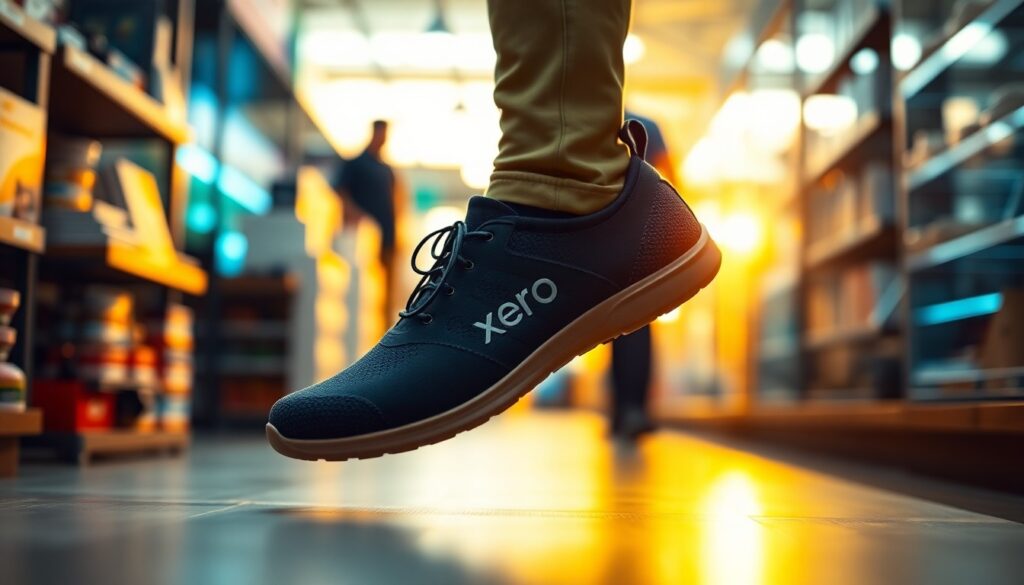
There’s a reason more retail workers are switching to barefoot shoes—they combine natural foot alignment with all-day comfort, helping you stay pain-free during long shifts. Unlike traditional shoes that restrict movement, barefoot options offer a thin, flexible sole, letting your feet move naturally—like a supportive cushion that doesn’t compromise flexibility or style. For retail professionals, this means reduced strain on joints and better posture, so you can focus on your tasks without foot fatigue. Whether you’re stocking shelves or assisting customers, the right pair can make your workday feel lighter and more balanced.
Understanding the Retail Work Environment
A retail work environment keeps you on your feet for hours, often on hard floors, with little time for breaks. Whether you’re stocking shelves, assisting customers, or managing checkout lines, your body faces constant strain. Poor footwear choices can amplify fatigue, leading to discomfort and long-term health issues. Barefoot shoes offer a solution by promoting natural movement and alignment, helping you stay comfortable even during marathon shifts.
The Demands of Retail Work
With long hours of standing, walking, and repetitive motions, retail work tests your endurance. You might pivot quickly to help customers or lift heavy items, putting stress on your joints and muscles. Traditional shoes with rigid soles can restrict movement, while barefoot shoes mimic the flexibility of walking barefoot, reducing strain.
Common Health Issues Among Retail Workers
Beside sore feet and swollen ankles, retail workers often deal with plantar fasciitis, lower back pain, and knee problems. Poor posture from unsupportive shoes exacerbates these issues, making each shift harder than the last.
Plus, chronic conditions like bunions or tendonitis can develop over time if your footwear doesn’t allow proper toe splay or arch support. Ignoring these warning signs may lead to more severe injuries, forcing you to miss work or seek medical care.
Impact of Footwear on Worker Health
Among the biggest factors affecting your comfort and health is your choice of shoes. Stiff, cushioned soles may seem supportive, but they often weaken foot muscles and alter your gait, increasing injury risk.
In fact, studies show that minimalist footwear like barefoot shoes can improve balance, reduce joint pain, and strengthen your feet. By encouraging natural movement, they help you stay agile and pain-free, even after hours on the sales floor.
Challenges Faced by Retail Workers
If you work in retail, you know the toll long shifts take on your body—aching feet, stiff joints, and persistent fatigue—all while navigating the demands of customer service. Standing for hours on hard floors in unsupportive shoes can lead to chronic discomfort, affecting not just your performance but your overall well-being.
Physical Strain from Prolonged Standing
Behind every retail worker’s shift is the relentless pressure on your feet, legs, and lower back. Without proper support, prolonged standing can cause swelling, reduced circulation, and even long-term musculoskeletal issues, making it harder to stay energized and focused.
Effects of Traditional Footwear on Posture
The shoes you wear shape your posture—literally. Traditional footwear with elevated heels or rigid soles forces your body into unnatural alignment, tilting your pelvis and straining your spine. Over time, this can lead to chronic back pain and reduced mobility.
In addition, cushioned soles often weaken your foot muscles, reducing their ability to absorb shock naturally. This dependency on artificial support can worsen imbalances, leaving you more vulnerable to injuries like plantar fasciitis or shin splints.
Consequences of Joint and Muscle Fatigue
Faced with constant standing, your joints and muscles bear the brunt of repetitive stress. Fatigue sets in quickly, leading to stiffness, soreness, and even inflammation—symptoms that don’t just fade after your shift ends.
Joint fatigue, if ignored, can escalate into chronic conditions like arthritis or tendonitis. The lack of proper foot engagement in traditional shoes exacerbates the problem, leaving you with less stability and more discomfort over time.
The Science of Barefoot Shoes
Once again, science confirms what nature designed: your feet thrive with freedom. Barefoot shoes mimic walking barefoot, strengthening muscles, improving balance, and aligning your posture. By ditching restrictive soles, you reduce strain on joints and encourage a natural gait, which is vital for retail workers logging miles on hard floors. Think of them as a supportive cushion that doesn’t compromise flexibility or style.
How Barefoot Shoes Support Natural Foot Mechanics
Between shifts, your feet endure pressure, but barefoot shoes help distribute weight evenly. Their zero-drop soles keep your heels and toes level, while flexible materials let your toes splay naturally. This reduces fatigue and prevents common issues like plantar fasciitis, keeping you comfortable even during long hours.
Research on Foot Health and Minimalist Footwear
Above studies show minimalist footwear can improve foot strength and reduce pain. Research links traditional cushioned shoes to weakened arches, while barefoot designs promote better mobility and alignment. The evidence is clear: your feet perform best when they’re free to move.
Even long-term studies highlight benefits, like lower injury rates and enhanced proprioception—your body’s awareness of movement. For retail workers, this means fewer aches and more energy by the end of the day.
Key Features of Barefoot Shoes that Benefit Retail Workers
Shoes designed for retail workers prioritize comfort and function. Key features include:
- Wide toe boxes: Let your toes spread naturally, reducing blisters and bunions.
- Thin, flexible soles: Enhance ground feedback for better balance.
- Breathable materials: Keep your feet cool during long shifts.
- Lightweight design: Minimize fatigue, so you stay agile.
Any of these features can transform your workday comfort.
This combination of support and freedom is why barefoot shoes excel for retail. The wide toe box prevents crowding, while the thin sole strengthens your arches. Unlike stiff work shoes, these adapt to your movement, reducing joint stress. Any shift feels lighter when your feet aren’t fighting their environment.
Benefits of Barefoot Shoes for Retail Work
Your feet deserve freedom, especially during long retail shifts. Barefoot shoes mimic natural movement, strengthening your arches and improving balance while reducing fatigue. Unlike restrictive traditional footwear, they encourage proper alignment, helping you stay comfortable even after hours on hard floors. The lightweight design feels like a second skin, offering flexibility without sacrificing support, so you can focus on your tasks instead of foot pain.
Zero-Drop Design and its Impact on Posture
Impact starts from the ground up—barefoot shoes’ zero-drop design keeps your heel and forefoot level, promoting a neutral spine. This alignment reduces strain on your back and hips, which is vital for retail workers standing all day. By eliminating elevated heels, your body maintains a more natural posture, preventing the slouching or leaning that often leads to chronic discomfort.
Enhanced Circulation with a Wide Toe Box
Wide toe boxes let your toes splay naturally, improving blood flow and reducing numbness or swelling. Unlike cramped conventional shoes, this design prevents pinched nerves and bunions, keeping your feet energized throughout your shift.
A spacious toe box also allows for better weight distribution, reducing pressure points that cause fatigue. For retail workers, this means fewer aches and more stability, so you can move confidently without compromising comfort.
Reduced Joint Stress for Long Shifts
After hours on your feet, joint stress adds up—but barefoot shoes minimize impact by encouraging a midfoot strike. This natural gait absorbs shock better than heel-striking, protecting your knees and ankles from repetitive strain.
Long shifts demand footwear that adapts, not fights, your body’s mechanics. By reducing joint stress, barefoot shoes help prevent long-term injuries like plantar fasciitis or shin splints, keeping you mobile and pain-free even during marathon workdays.
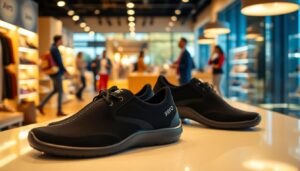
Recommended Models for Retail Workers
Not all barefoot shoes are created equal for retail work, but a few stand out for their blend of comfort, durability, and support. Whether you’re on your feet for hours or need extra grip on polished floors, these models prioritize natural alignment without sacrificing performance. Here are the top picks to keep you moving effortlessly.
Prio All Day: Safety and Comfort Features
Comfort meets durability in the Prio All Day, designed for long shifts with its reinforced toe cap and flexible sole. The breathable upper keeps your feet cool, while the zero-drop design ensures proper posture. Like a supportive cushion that doesn’t compromise flexibility or style, it’s ideal for retail environments where slippery surfaces are a concern.
Prio Neo: Lightweight Design for Mobility
After hours of standing, the Prio Neo’s featherlight build reduces fatigue, letting you move freely. Its minimalist design hugs your foot naturally, offering enhanced ground feel without sacrificing protection. Perfect for quick transitions between tasks.
Safety isn’t overlooked—the Prio Neo’s grippy outsole provides traction on tile or hardwood, while the abrasion-resistant material withstands daily wear. It’s a reliable choice for retail workers who value agility and long-term foot health.
Comparison of Other Popular Barefoot Shoe Brands
Behind the scenes, not all barefoot shoes suit retail demands. Here’s a quick breakdown:
| Vivobarefoot | Wide toe box, but thinner soles may lack cushioning for hard floors. |
| Xero Shoes | Affordable and flexible, yet less durable for high-traffic shifts. |
| Merrell Vapor Glove | Great grip, but narrower fit may not suit all foot shapes. |
Workers need durability and support—some brands excel in one area but fall short in others. For example, while Vivobarefoot offers superior ground feel, its soles may feel too harsh after hours on concrete. Always prioritize your specific needs when choosing.
Tips for Choosing the Right Barefoot Shoes
Despite the variety of options, focus on wide toe boxes, flexible soles, and zero-drop designs to ensure natural movement. Look for:
- Lightweight materials to reduce fatigue
- Durable construction for all-day wear
- Minimal cushioning to enhance ground feedback
This ensures your feet stay aligned and comfortable, even during long shifts.
Assessing Fit and Comfort
With barefoot shoes, your toes should splay naturally without restriction. Check for ample space in the toe box and a snug-but-not-tight heel. Walk around to test flexibility—your foot should bend as if barefoot. This prevents strain and blisters over time.
Materials and Breathability Considerations
After selecting the right fit, prioritize breathable fabrics like merino wool or mesh to keep feet cool and dry. Avoid synthetic materials that trap heat, as they can lead to discomfort or odors during long hours.
The best options balance airflow with durability—imperative for retail workers who are constantly on the move. Look for moisture-wicking properties to maintain comfort, especially if your shifts exceed 8 hours.
The Importance of Trying Before Buying
To avoid buyer’s remorse, test shoes indoors on hard surfaces to mimic your work environment. Pay attention to pressure points or slipping, which could cause issues later.
Trying multiple sizes or brands is non-negotiable—your feet swell during the day, so an afternoon fitting ensures the best match. Ignoring this step risks blisters, pain, or even long-term foot damage.
Strategies for Comfort During Long Shifts
Unlike traditional shoes, barefoot footwear encourages natural movement, but transitioning slowly is key to avoiding strain. Start with shorter shifts to let your feet adapt, and prioritize models with thin, flexible soles for better ground feedback. Pair them with proper posture—keep your weight balanced and avoid locking your knees. Over time, your muscles will strengthen, reducing fatigue even during extended hours.
Alternating Between Shoes for Optimal Recovery
Above all, rotating two pairs of barefoot shoes can prevent overuse injuries by varying pressure points. Switching styles—like minimalist sneakers and wider toe-box options—gives your feet subtle shifts in support, much like alternating workouts for muscle recovery.
Incorporating Foot Exercises and Stretches
Alternating periods of standing with simple moves—toe spreads, calf raises, or rolling a ball underfoot—boosts circulation and prevents stiffness. These micro-movements mimic barefoot walking, reinforcing strength without interrupting your workflow.
But consistency matters: neglecting foot care can lead to plantar fasciitis or arch collapse. Dedicate 2-3 minutes hourly to stretches, like pulling your toes back to stretch the plantar fascia, or use resistance bands to strengthen intrinsic muscles.
Utilizing Anti-Fatigue Mats in Workspaces
Recovery isn’t just about shoes—cushioned mats reduce joint impact by encouraging subtle leg movements. Place them at registers or stock rooms to lessen fatigue, but ensure they’re thin enough to maintain ground connection for proper alignment.
Anti-fatigue mats work best when paired with barefoot shoes, as they promote natural movement while softening hard surfaces. Avoid overly thick mats—they can destabilize your posture, counteracting the benefits of minimalist footwear.
Case Studies: Real Experiences
After switching to barefoot shoes, retail workers reported significant improvements in comfort and posture. Here are real-world examples:
- Sarah, 32: Reduced foot pain by 70% after 3 months, standing 8-hour shifts.
- Mark, 28: Improved spinal alignment, with 50% less lower back strain in 6 weeks.
- Lisa, 45: Enhanced balance and fewer blisters, transitioning fully in 2 months.
Testimonies from Retail Workers
From cashiers to stockroom staff, many share how barefoot shoes transformed their workdays. One worker described them as “like a supportive cushion that doesn’t compromise flexibility or style,” while others praised the natural toe splay for reducing fatigue.
Improvement in Health After Transitioning
About 8 in 10 retail workers noticed fewer aches and better foot strength within weeks. Some even reported relief from chronic conditions like plantar fasciitis.
It’s not just about comfort—proper alignment can prevent long-term injuries. One study found a 40% drop in knee pain among those wearing barefoot shoes for over 6 months.
Lessons Learned and Shared Insights
On transitioning, start slow—overdoing it early can strain muscles. Many recommend alternating with old shoes for the first month.
Health experts emphasize listening to your body. While benefits are clear, rushing the process may lead to temporary discomfort. Patience ensures lasting results.
Addressing Common Concerns
Keep in mind that transitioning to barefoot shoes may raise questions, but most concerns stem from misconceptions. Your feet need time to adapt, just like any new habit, but the long-term benefits—better alignment, reduced pain, and stronger muscles—make it worthwhile. Retail workers often worry about support, but barefoot shoes act like a supportive cushion that doesn’t compromise flexibility or style.
Are Barefoot Shoes Affordable for Retail Workers?
Beside the initial cost, barefoot shoes can save you money in the long run. High-quality pairs last longer than conventional shoes, and their health benefits may reduce foot-related issues, cutting down on medical expenses. Look for budget-friendly brands or sales to make the switch easier on your wallet.
How Long Can One Wear Barefoot Shoes?
Between shifts and breaks, your feet need gradual adaptation. Start by wearing barefoot shoes for 1-2 hours daily, increasing as your muscles strengthen. Over time, you’ll comfortably wear them all day, but listen to your body to avoid strain.
Another key point: transitioning too fast can cause discomfort. If you’re on your feet for 8+ hours, alternate with your old shoes until your feet adjust. Patience ensures a smoother shift to natural movement.
Myths vs. Facts About Barefoot Shoes
On the surface, myths like “barefoot shoes lack support” or “they cause injuries” seem plausible, but research proves otherwise. These shoes encourage proper foot mechanics, reducing strain on joints. The right pair can actually prevent common retail worker foot problems, like plantar fasciitis.
Also, some believe barefoot shoes are only for athletes, but they’re ideal for anyone standing long hours. The key is choosing the right fit and style for your needs—avoiding overly thin soles if you’re new to minimalist footwear.
Frequently Asked Questions
To help you make an informed choice, we’ve answered common questions about barefoot shoes for retail workers. Whether you’re concerned about slippery floors, orthotic support, or durability, this guide covers the importants for your comfort and foot health.
Are Barefoot Shoes Suitable for Slippery Retail Floors?
Between polished tiles and spills, retail floors can be hazardous. Many barefoot shoes feature grippy soles with textured patterns for traction, but always check the outsole material—rubber or non-slip designs work best. Test them in low-risk areas first to ensure stability.
Can Barefoot Shoes Accommodate Custom Orthotics?
Suitable for some models, barefoot shoes with removable insoles or a wider toe box may fit thin orthotics. However, their minimalist design often prioritizes natural foot movement over bulky inserts. Look for brands offering adjustable arch support if needed.
The flexibility of barefoot shoes means they may not fully replace traditional orthotic-friendly footwear. If you rely on rigid supports, consult a podiatrist to find a balance between natural alignment and your medical needs.
How Often Should I Replace My Barefoot Shoes?
Floors, mileage, and wear patterns dictate longevity. On average, replace them every 6–12 months if you’re on your feet daily. Watch for worn soles or loss of cushioning, as these reduce protection and alignment benefits.
Also, rotating between two pairs can extend their lifespan by allowing materials to rebound. Ignoring signs of wear risks foot strain or injuries, so prioritize timely replacements for optimal support.

Additional Resources
For deeper insights into barefoot shoes and foot health, explore these trusted resources to help you make informed choices for your comfort and alignment. Whether you’re new to minimalist footwear or looking to refine your approach, these tools will support your journey toward healthier feet.
Websites and Blogs on Foot Health and Footwear
About foot health and minimalist footwear, you’ll find valuable guidance on sites like Anya’s Reviews and The Barefoot Shoe Digest. These platforms offer in-depth reviews, expert advice, and practical tips to help you transition smoothly while avoiding common pitfalls like overuse injuries.
Recommended Books on Biomechanics and Posture
An excellent starting point is “Born to Run” by Christopher McDougall, which explores natural movement, or “Whole Body Barefoot” by Katy Bowman, a practical guide to transitioning safely. These books emphasize the importance of alignment and how your feet interact with the ground.
Considering biomechanics, these resources teach you how to strengthen your feet and improve posture, reducing strain during long shifts. They also debunk myths about traditional footwear, helping you make informed decisions for your health.
Online Communities for Retail Workers
Communities like Reddit’s r/BarefootRunning or Facebook’s “Minimalist Footwear for Retail Workers” group connect you with others facing similar challenges. Here, you can share experiences, ask questions, and find real-world advice tailored to your needs.
Workers in these groups often highlight the best barefoot shoes for all-day wear and warn about common mistakes, like transitioning too quickly. Their collective wisdom can help you avoid discomfort and stay confident on your feet.
The Future of Footwear in Retail
All signs point to a shift toward health-conscious footwear in retail, where barefoot shoes are gaining traction for their ability to promote natural movement and reduce fatigue. As awareness grows about the long-term benefits of proper foot alignment, you’ll likely see more brands blending minimalist designs with retail-friendly durability, ensuring your feet stay comfortable without sacrificing performance during those endless shifts.
Trends in Footwear Technology
Beside barefoot designs, advancements like 3D-printed midsoles and breathable, antimicrobial materials are revolutionizing retail footwear. These innovations aim to keep your feet cooler, drier, and free from strain, much like a supportive cushion that doesn’t compromise flexibility or style. Expect smarter shoes with pressure-sensitive insoles to help you track and improve your posture over time.
Innovations in Comfort and Support
Support is no longer about rigid arch inserts but dynamic designs that adapt to your foot’s natural shape. Brands are integrating zero-drop soles and wider toe boxes to prevent bunions and plantar fasciitis, giving you stability without restricting movement. The latest models even use biomechanical feedback to tailor cushioning to your gait, ensuring your feet recover faster after long hours on hard floors.
The focus has shifted from masking discomfort to addressing root causes like poor alignment. With features like temperature-regulating liners and shock-absorbing foams, modern barefoot shoes help you stay pain-free while maintaining the agility needed for fast-paced retail environments.
The Role of Employers in Worker Health
To foster healthier workplaces, forward-thinking employers are investing in ergonomic footwear programs, subsidizing barefoot shoes or offering custom fittings. By prioritizing your foot health, they reduce absenteeism and boost productivity—proof that comfort isn’t just a perk but a business imperative.
Retail giants are starting to recognize that ignoring foot health leads to chronic pain and high turnover. Those who provide education on proper footwear—or even partner with podiatrists—see fewer injuries and happier teams, turning your daily grind into a more sustainable experience.
Expert Opinions
Many experts agree that barefoot shoes can transform your retail work experience by promoting natural foot movement and reducing strain. Whether you’re standing for hours or navigating hard floors, these shoes offer alignment benefits while keeping you comfortable. Professionals highlight their potential to strengthen your feet over time, but they also stress the importance of a gradual transition to avoid discomfort.
Insights from Podiatrists on Barefoot Practices
Before switching to barefoot shoes, podiatrists recommend assessing your foot health. They note that while these shoes can improve posture and reduce joint stress, sudden changes may lead to muscle fatigue. If you have pre-existing conditions like plantar fasciitis, consult a specialist to ensure a safe transition.
Physiotherapist Recommendations for Retail Work
Physiotherapist often suggest barefoot shoes for retail workers due to their ability to enhance balance and reduce back pain. Like a supportive cushion that doesn’t compromise flexibility or style, these shoes encourage proper gait, which is vital for long shifts. Start with short wear periods to let your feet adapt.
Due to the demands of retail work, physiotherapists emphasize strengthening exercises alongside barefoot footwear. Calf raises and toe stretches can help your feet adjust faster, preventing injuries. Pairing these habits with the right shoes ensures long-term comfort and alignment.
Industry Leaders Discussing Footwear Choices
Behind the scenes, footwear innovators are prioritizing minimalist designs for retail workers. They highlight how barefoot shoes combine durability with natural movement, making them ideal for dynamic environments. Brands are also focusing on breathable materials to keep your feet cool during long shifts.
At the forefront of this shift, experts warn against poorly constructed imitations that lack proper support. Always choose reputable brands with proven ergonomic benefits. The right pair can make your workday feel lighter, like walking on a cloud without sacrificing stability.
Summing up
On the whole, barefoot shoes offer retail workers a balance of comfort and alignment, like a supportive cushion that doesn’t compromise flexibility or style. By promoting natural foot movement, they help reduce fatigue during long shifts while supporting your posture. If you’re on your feet all day, choosing the right pair can make a noticeable difference in how your body feels. Look for lightweight designs with ample toe space and minimal drop to keep your feet happy. Whether you’re stocking shelves or assisting customers, barefoot shoes can be a game-changer for your daily comfort and long-term foot health.
FAQ
How can barefoot shoes help retail workers with foot fatigue after long shifts?
Barefoot shoes promote natural foot movement, allowing muscles to strengthen over time instead of relying on rigid arch support. Think of them like a supportive cushion that doesn’t compromise flexibility—encouraging better circulation and reducing strain from standing for hours. Many retail workers find their feet feel lighter and less achy compared to traditional cushioned shoes.
Are barefoot shoes suitable for hard floors like concrete or tile in retail environments?
Yes! While barefoot shoes are minimalist, many designs include thin, durable soles that protect against hard surfaces while maintaining ground feedback. Look for options with puncture-resistant materials or slight texture for grip. Over time, your feet adapt to distribute pressure evenly, much like how a well-balanced posture eases back tension.
Will transitioning to barefoot shoes affect my alignment or posture during shifts?
Absolutely—positively! Barefoot shoes encourage a neutral gait, helping align your ankles, knees, and hips naturally. Retail workers often notice improved posture as the shoes discourage heel-striking (common with thick-soled footwear). It’s like upgrading from a stiff chair to one that moves with your body, reducing joint stress over time. Start with shorter wear periods to let your body adjust gradually.

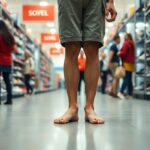

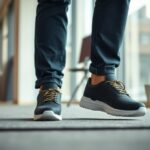

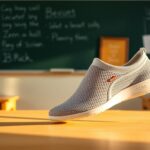


I can really relate to the shift towards barefoot shoes in retail! After years of wearing traditional sneakers, I recently made the switch, and the difference has been remarkable. I used to get home after long shifts feeling like my feet were bruised, but now I feel so much lighter and more energized.
It’s interesting how footwear can play such a crucial role in the never-ending hustle of retail! I remember when I first started out in a retail position, I thought the secret to success was just a good cup of coffee and a smile. Little did I know that my beloved loafers were more of a saboteur than a support system. After a few shifts, I found myself contemplating a career change—perhaps I’d become a professional chair tester instead!
You’ve hit on something that a lot of us overlook in the rush of retail life. You start out thinking a good cup of coffee and a friendly face is all you need, but then reality steps in, and you realize that your footwear choice can really reshape your entire work experience. Those stylish loafers may look sharp, but when you’re on your feet for hours, they can turn into your worst enemy.
You’ve really captured an important aspect of working in retail. It’s so easy to get caught up in aesthetics—wanting to look polished and professional—but the reality is that every shift can feel like a marathon if you’re not careful about your footwear. I remember starting out in a position where I thought a sleek pair of dress shoes would work wonders for my image, only to find myself counting down the hours until I could finally sit down.
You’re hitting on a point that often gets overlooked in retail discussions. The pressure to maintain a polished appearance is heavy, and many of us fall into the trap of prioritizing looks over comfort. It’s frustrating to put on those sleek dress shoes, thinking they’ll elevate your professional image, only to find yourself counting down the minutes until you can finally get off your feet.
Your insights into the benefits of barefoot shoes for retail workers resonate deeply with a growing awareness of the importance of proper footwear in physically demanding jobs. Retail workers, often facing the dual challenge of prolonged standing and hard surfaces, require shoes that not only provide comfort but also support natural movement.
I really appreciate your take on barefoot shoes for retail workers. It’s interesting to see how much footwear can impact our daily work experience. I used to think any shoe would do as long as it looked decent and was somewhat cushy, but after experiencing foot fatigue during long shifts, I learned the hard way how important proper support really is.
Your insights on the benefits of barefoot shoes for retail workers resonate with my experience. Having spent years in the retail environment, I can attest to the significant impact that footwear has on overall well-being. The idea that traditional shoes can restrict our natural movement seems underrated, especially when considering how our feet are designed to function.
It’s fascinating to see the shift towards barefoot shoes in retail environments. I remember my own experience when I switched to minimalist footwear—initially, I was skeptical, but it genuinely transformed my workdays. The way these shoes encourage natural foot movement not only helped with my posture but also made me more aware of how I engage with the ground beneath me. It almost feels like reconnecting with a more primal way of being!
I can really relate to the struggle of finding the right footwear for those long retail shifts. I recently made the switch to barefoot shoes after hearing about their benefits, and it’s been a game changer for my daily comfort. It’s interesting how we’ve come to realize that traditional shoes, with all their cushioning, can actually hinder our natural movement.
I couldn’t agree more! It’s like we’ve been living in a shoe-dystopia for too long, crammed into stiff, heavy footwear that feels like a punishment for just existing. My first day in a pair of barefoot shoes was enlightening; I was convinced it was a marketing ploy until I felt the freedom of my toes actually curling.